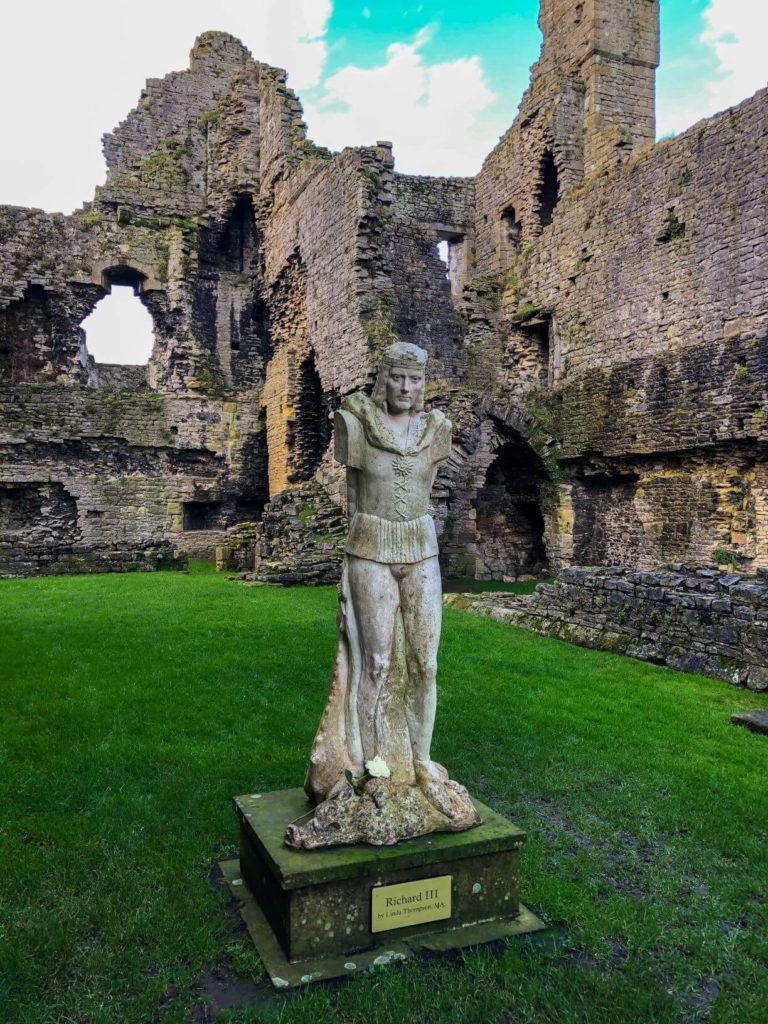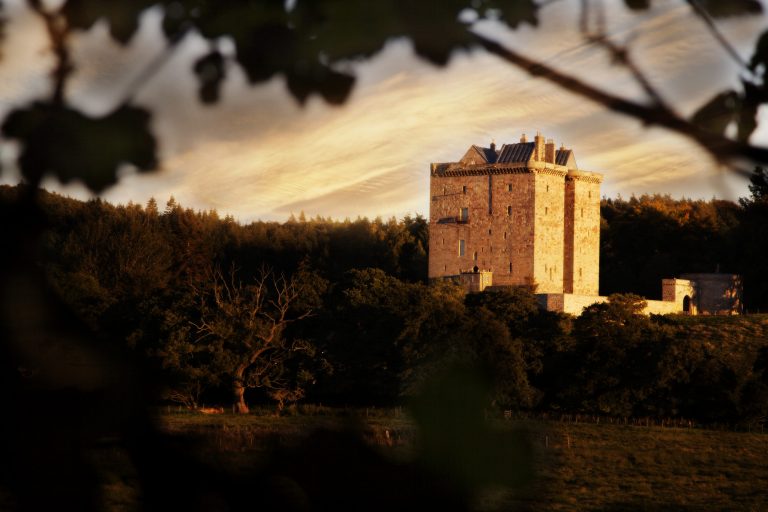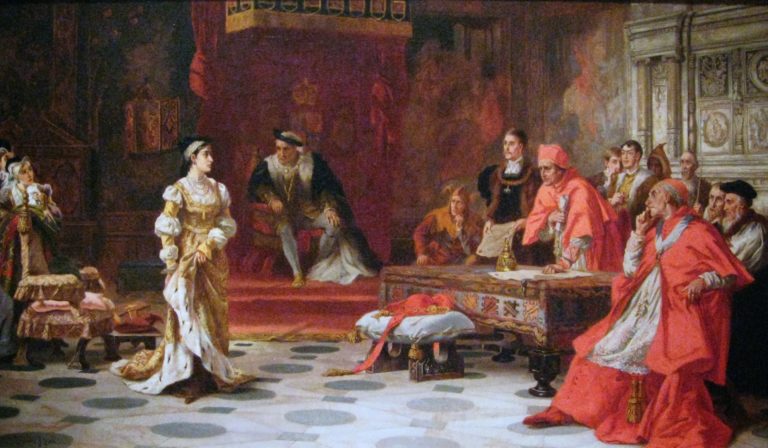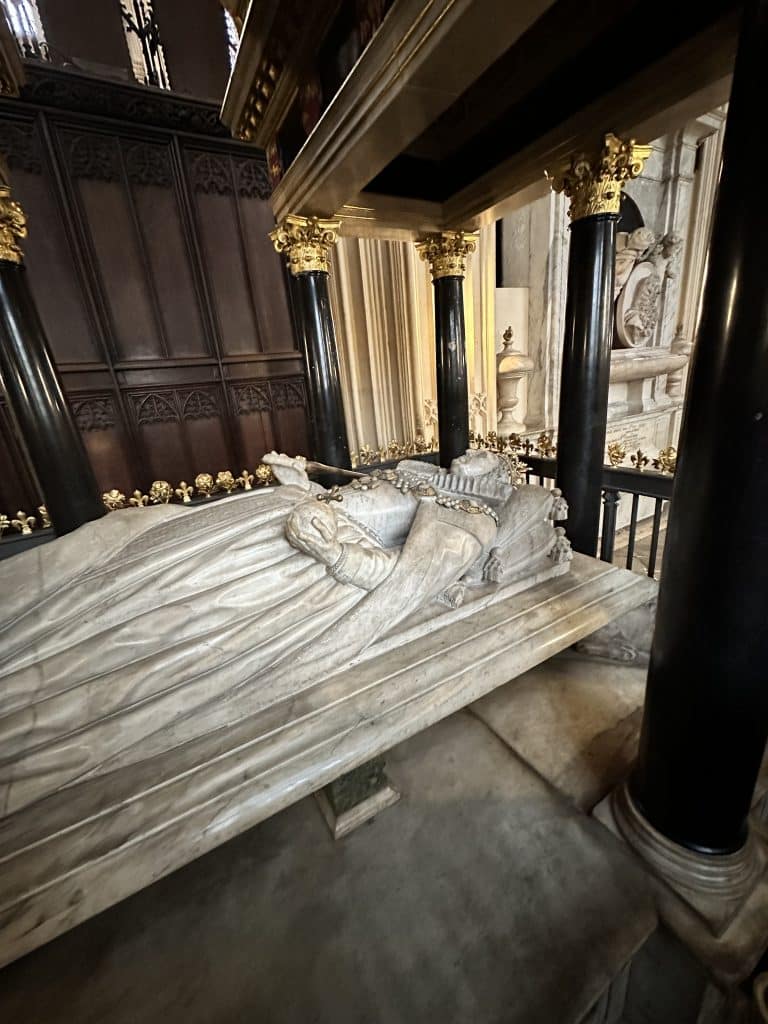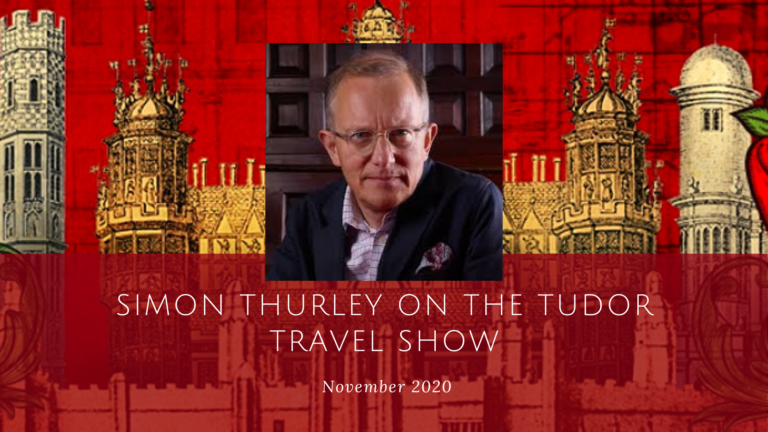The A-Z of Tudor Places: Berkeley Castle
Berkeley Castle, in Gloucestershire, has been home to the Berkeley family for around 900 years, with the exception of a 60-year period when it fell into the hands of the Crown. Here you can watch or read about a brief history of the castle, including details relating to Henry VIII and Anne Boleyn’s week-long stay at Berkeley during the summer of 1535.
The Appearance and Brief History of Berkeley Castle
The castle sits perched on a plateau that overlooks fields stretching away below it. It is an impressive sight. The basic design is of the motte-and-bailey construction typical of the Norman period. This is not surprising as Berkeley Castle was originally built in the eleventh century. However, it underwent further development in the twelfth and fourteenth centuries.
The castle is highly distinctive in appearance, constructed from local pink-grey and yellow Severn sandstone. Although impressive today, it was never built as a fortress but rather as a comfortable family home for the Berkeley family.

Rather disparagingly, John Leland, antiquary and chronicler of sixteenth-century England, referred to the castle in his itinerary as ‘no great thing’. But today, Berkeley Castle is considered to be one of the supreme residential survivors of the fourteenth century. Sadly, although virtually nothing remains of its early interiors, it does retain most of its original external features, such as doors, arrow slits and windows, even down to iron catches.
In the early medieval period, the castle is probably best known as being the place of imprisonment of King Edward II. Rumours abound even to this day that the King’s death at Berkeley in 1327, possibly at the hands of his captors who (if those rumours are true) murdered him in a rather unspeakable fashion! He was later buried at the nearby Abbey at Gloucester, where his tomb can still be seen today.
In 1492, Berkeley Castle came into the ownership of the Crown. This resulted from a bargain struck between William, then Viscount Berkeley and Henry VII. Viscount Berkeley was to receive a marquessate and the title of Earl Marshal of England (one of the premier offices of the land) while, in return, King Henry VIII would inherit Berkeley Castle upon the Marquis’ death. This he did, and the castle would remain the property of the Crown throughout the remainder of Henry VII’s reign and that of his son, King Henry VIII.
Henry VIII and Anne Boleyn Visit Berkeley
From a Tudor lover’s perspective, the most interesting event that occurred at Berkeley was the visit of Henry VIII and Anne Boleyn during the summer progress of 1535. The couple were over a month into their three-and-a-half-month progress when they arrived at Berkeley, staying there for the entire week.
At the time, Thomas Cromwell was the castle constable. We know that he was with the Royal party because of letters written and dated from the castle during his stay. Those letters clearly show that Cromwell was continuing to oversee the visitations of the lesser monasteries, heralding the beginning of the end of the great monastic institutions in England.
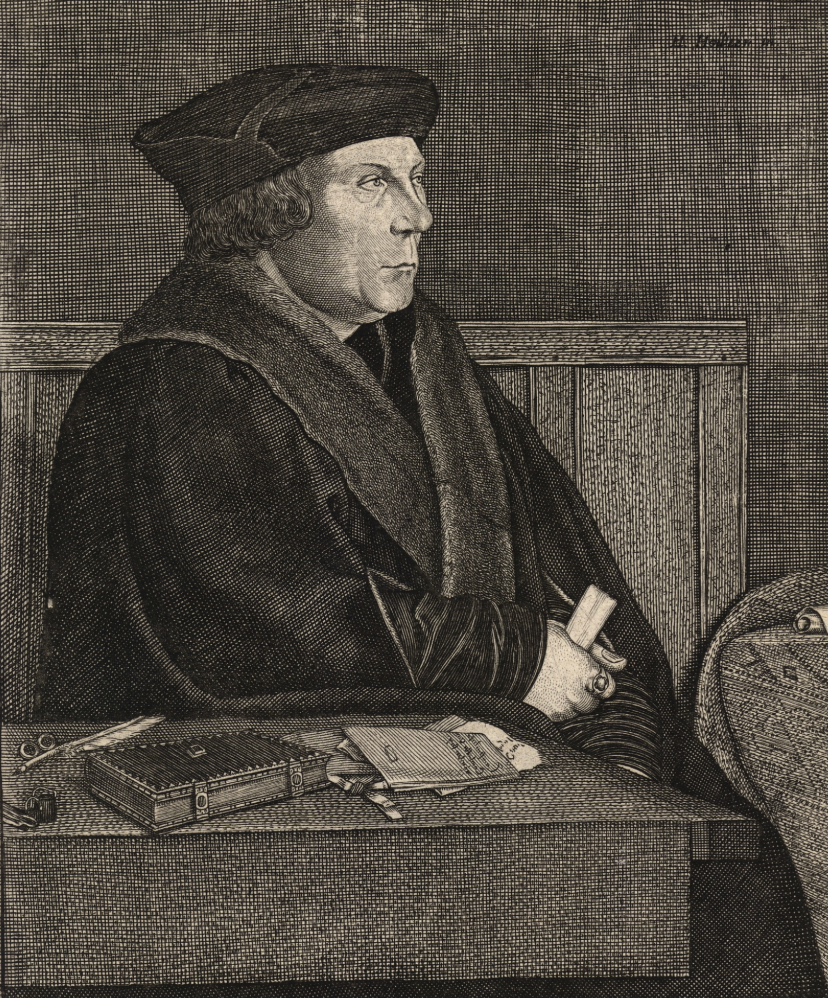
Unfortunately, due to the loss of all the archival records relating to the Crown’s period of ownership, we have no further details of how Henry and Anne spent their time at Berkeley Castle!
The Wow! Factor at Berkeley Castle
However, what undoubtedly makes visiting this property so worthwhile is the exceptional state of preservation of the rooms that the Royal couple would have used. These rooms allow the visitor to have a sense of the flow of chambers from the public to the private in a high-status house of the day.
Over the centuries, the less political Berkeley family developed the castle from its original early motte-and-bailey design with its austere Norman keep to create a more fashionable and comfortable suite of residential rooms and accompanying service offices, all within the pre-existing buttressed curtilage.
Today, when you pass under the gatehouse of Berkeley Castle, you enter a single courtyard, with the early medieval keep on your left and the entire range of service and residential lodgings encircling the rest of the inner courtyard.
Typical of the period when great halls were all the rage, the great hall at Berkeley is directly opposite the gatehouse entrance, entered by a porch. This porch leads into the screen’s passage at the lower end of the great hall. Such a passage separated the hall from the kitchen, buttery and pantry. Today, you still get a good sense of that arrangement.

The great hall itself is one of the finest in the country and impressive in scale. At the high end, a step demarcates the raised dais, with a stairway leading up to the first floor and the principal privy chambers.
At the head of the staircase, the old chapel (now a morning room) sits at an angle with the greater or outer chamber. This is connected to an inner chamber; the range filling much of this south side of the courtyard. In these rooms, we can imagine the Royal couple dining, playing cards and listening to music as they wiled away the long summer evenings in the heart of the Gloucestershire countryside.
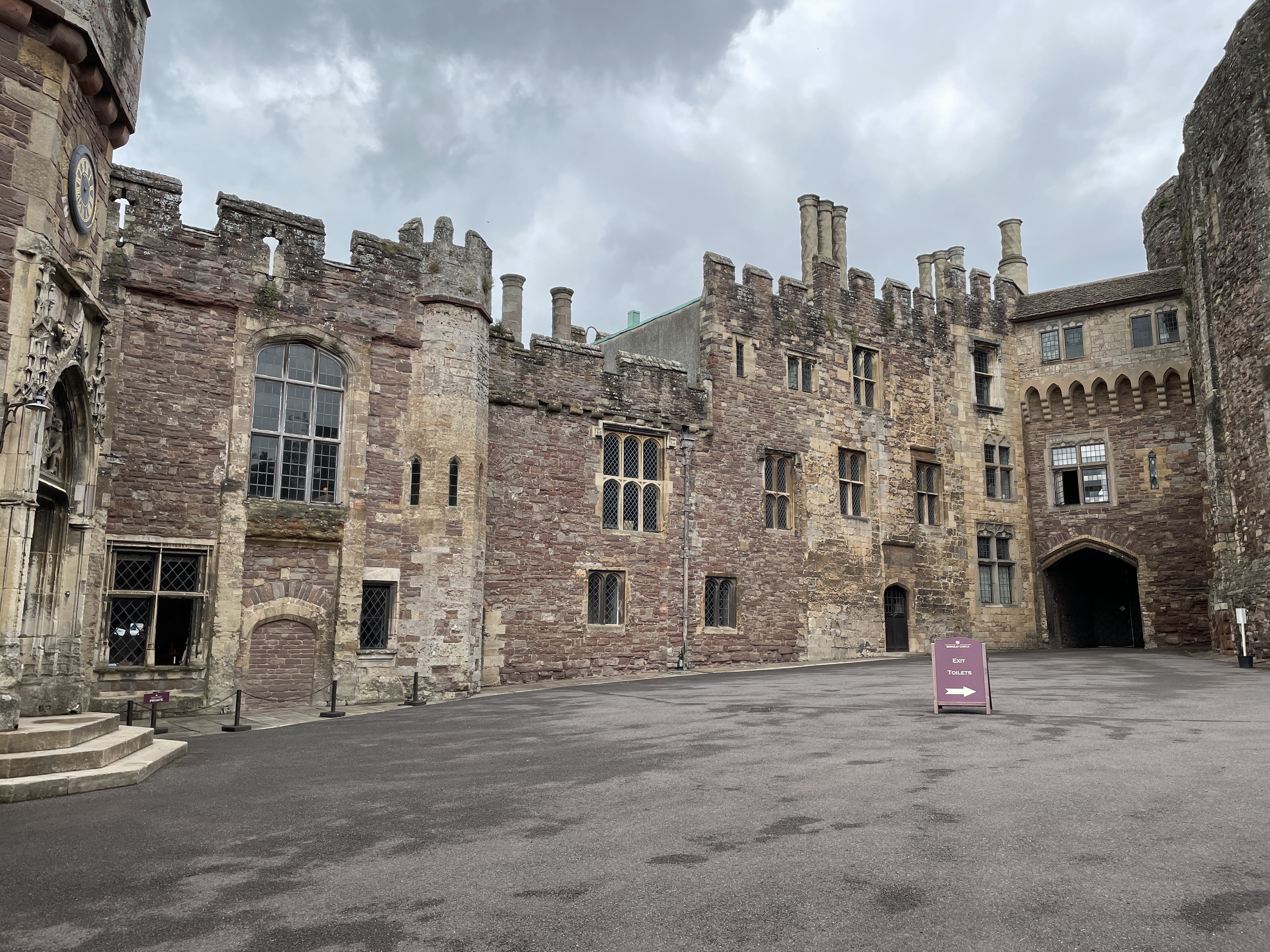
There are a couple of features to note. The first is the wooden gallery in the outer chamber. This once served as the chapel’s privy gallery. However, the gallery was moved from its original position by the 8th Earl of Berkeley in the early twentieth century, when he undertook considerable renovations of the interiors of the castle. In its time, this kind of gallery would have been commonplace, allowing the highest-status people in the house to hear Mass separately from the rest of the household. Therefore, it is not beyond the realms of possibility to think that the king and queen used this very same gallery to hear Mass while they were residing at Berkeley.
The second gem that you need to look out for if you are visiting is the sumptuous wall decoration hanging in the lobby at the head of the stairs. I have heard two versions of a story about the origins of this wall covering. The first is that it was a wall hanging made for Anne and Henry’s bedroom, which somehow found its way to Berkeley. Did the Royal couple leave this here after their visit in 1535?
The other story is that it once adorned the royal apartments in Henry’s temporary Palace at the Field of Cloth of Gold. Unfortunately, nobody knows its real origins. However, it is clear that the material is of exceptionally high status and fit for a king—and it has been dated to be around 500 years old.


